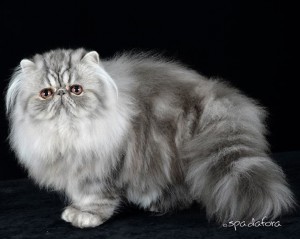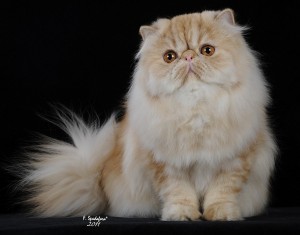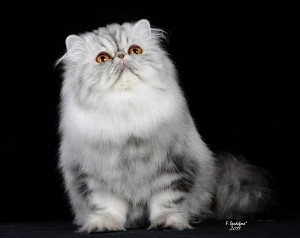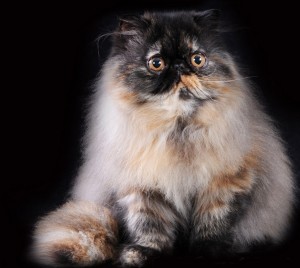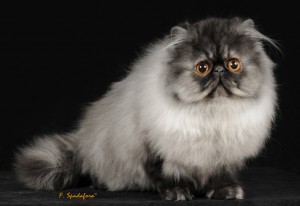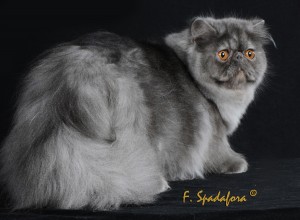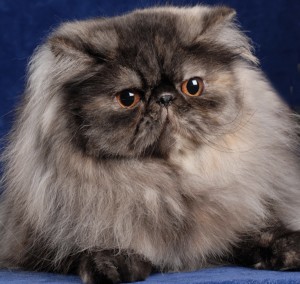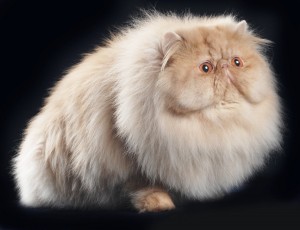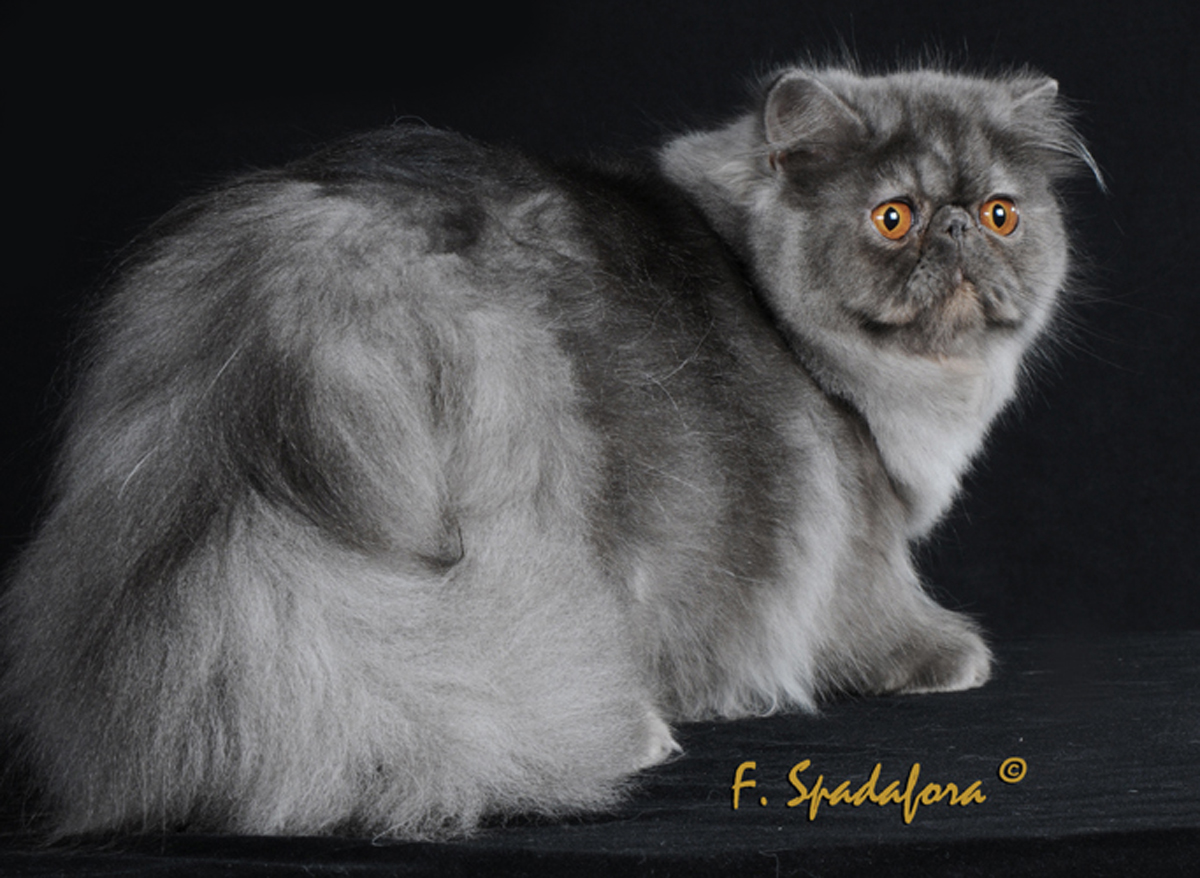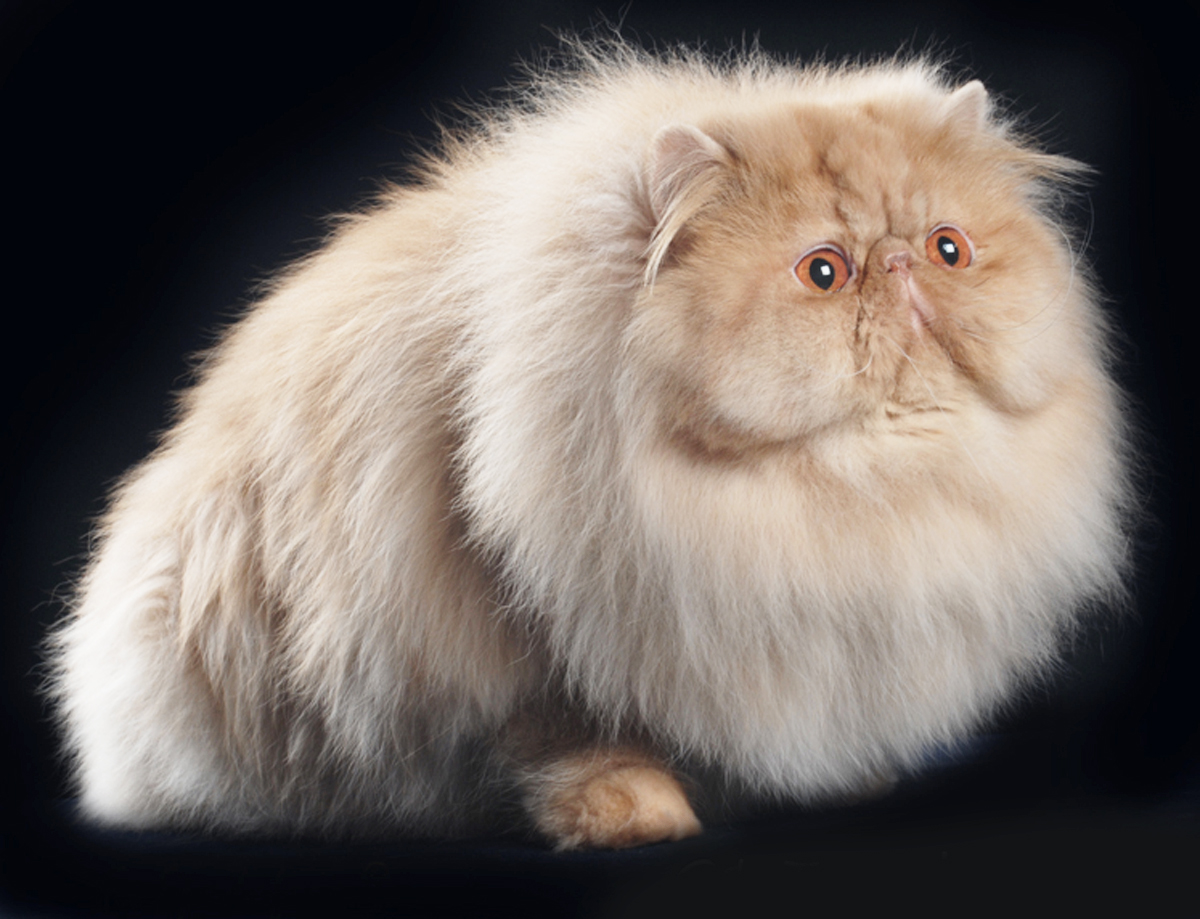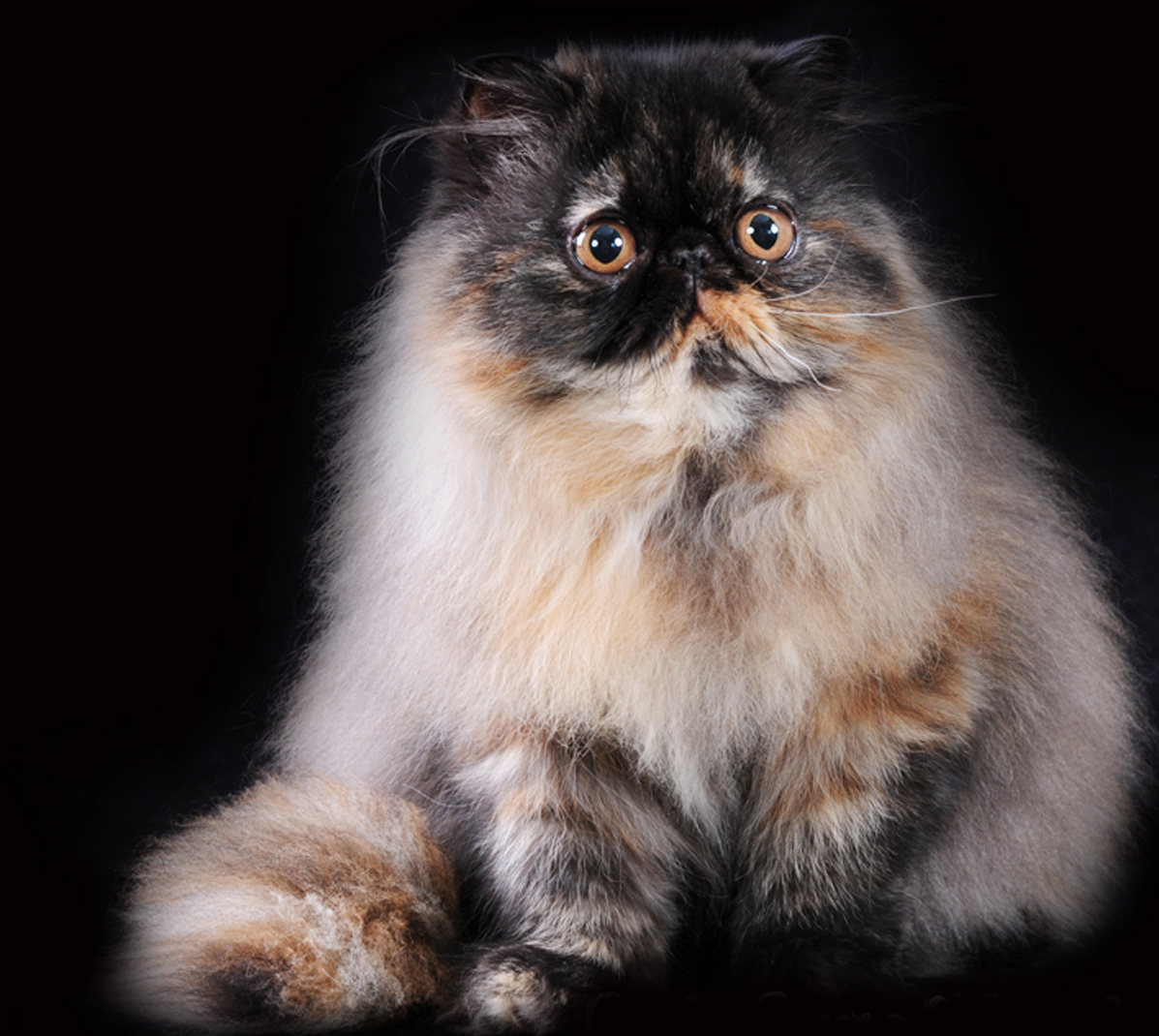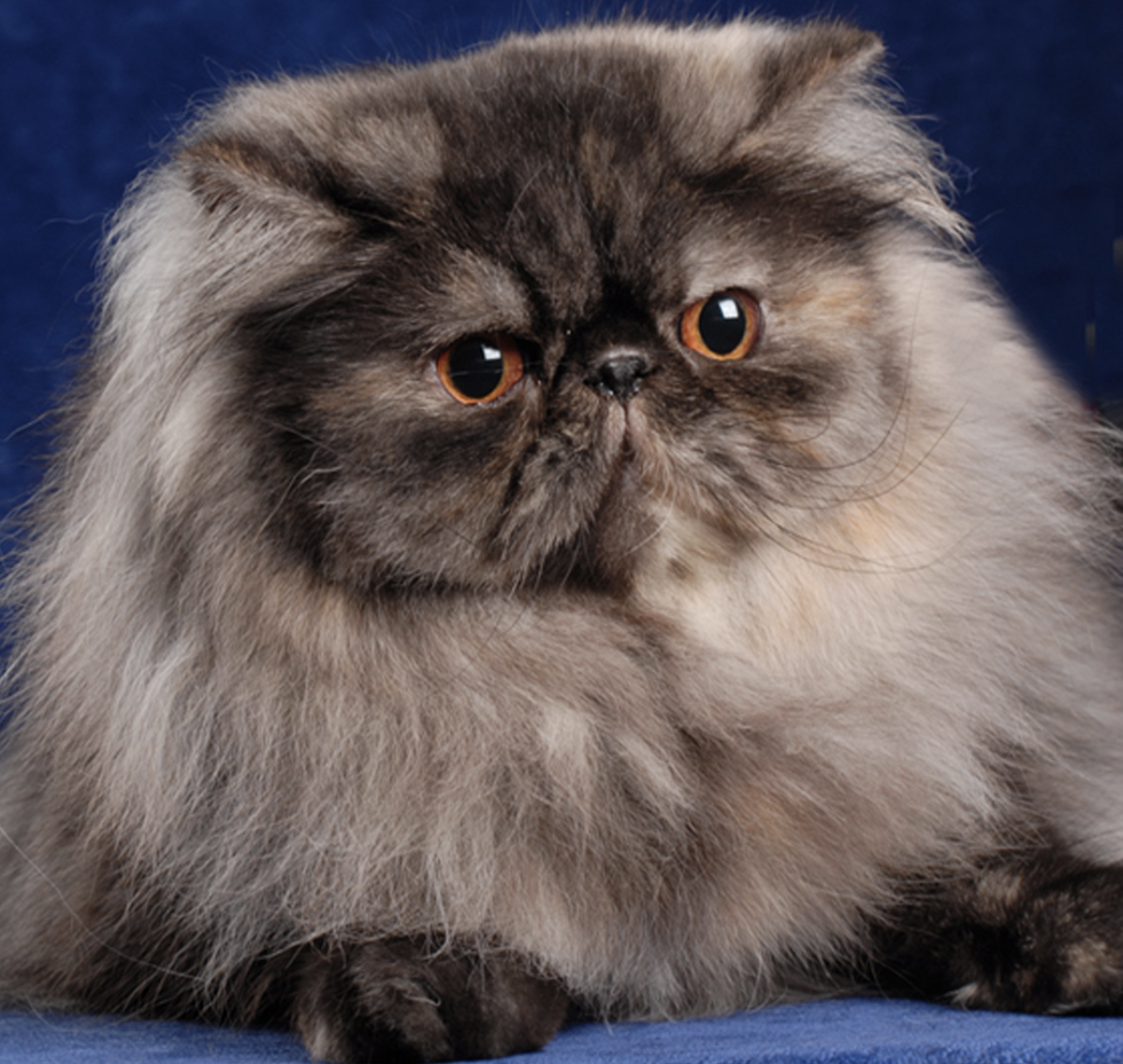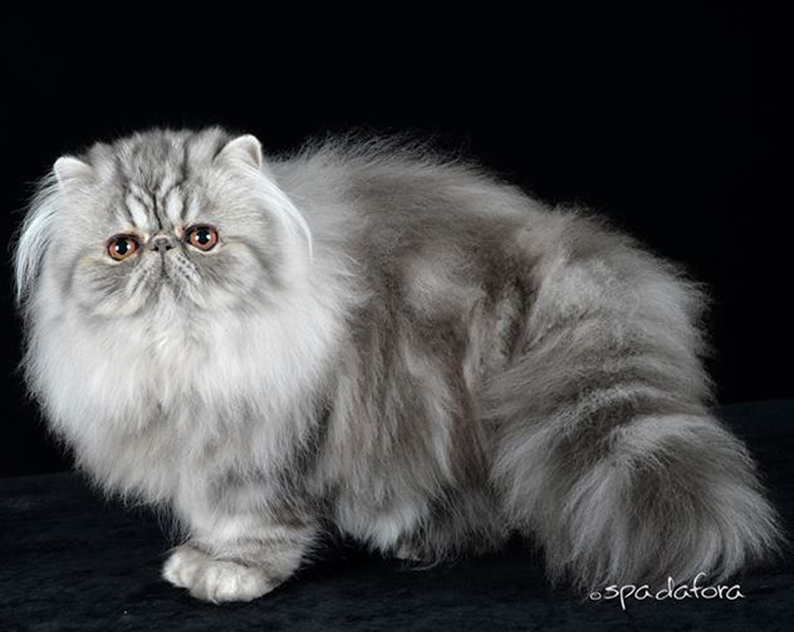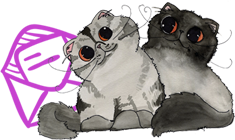Specialties
If a smoke Persian was a painting, the artist would be Rembrandt, the master of contrasts.
Smoke Persian is not very well known and it is impossible to imagine his beauty until you can see him in real life. The fascinating contrast of its fur, so unique, hardly evident when the cat moves… The root of each hair ( which can be of any colour) is so light as if it had been decoloured; infact, on a silver coat the effect is really spectacular and maybe, this has been the reason why I felt so hardly impressed when I saw one for the first time! Silvers originated in England even if Holland played an important role in the selection of this colour. Colour, is natural one hundred percent. Since the birth of silver kittens it is easy to find out if there are smoke one, silver tabby or solid. Do you want to know how? Since their birth smokes have a “pair of glasses” around their eyes which becomes lighter. Silver tabbies on the contrary have a very evident “M” on their fronthead, it is silver in colour. Darker tabby markings on their bodies are the other feature. In both cases, the perfect contrast is evident after the second change of fur. Silver tabbies, as well as the smokes, have always been my favourite colours. I breed them both with great passion, proud to obtain good results for each of these beautiful types. I do really hope my short writing will be useful to transmit to you all a bit of my deep love for Silvers and Smokes!
Cinzia
Silver colour is due to a gene called “inhibitor” which is responsible for the absence of pigmentation on the fur. It influences the melanine quantity in each single hair. This gene is represented by an “I”. Tabby patterns (ticked, mackerel, spotted and blotched), might be present with silver. By this way a variety of fascinating colour combinations may occur. Silver tabbies are very much appreciated indeed. Those who have a blotched pattern are particularly noticed because of the strong contrast in the background colour and the stripes. Silver may also be combined with white. A such coloured cat is called “bicolour”.
When the “non-agouti” gene (a) which determines the solid colour of the coat, is together with the “Silver” (I), we have the so-called “smoke”. The hair of a smoke cat is divided into two parts: one, from the tip to about 70/80% of the lenght is coloured; the other one is composed by a luminous silvering white colour. Smoke cats can’t be tabby even though some of them got markings that can be noticed since their birth. These markings disappear later on as the coat gets longer.
Summing up, Smokes can be combined with all “solid” colours (black, red, etc). Obviously, they can be combined with torties and diluite torties too.



